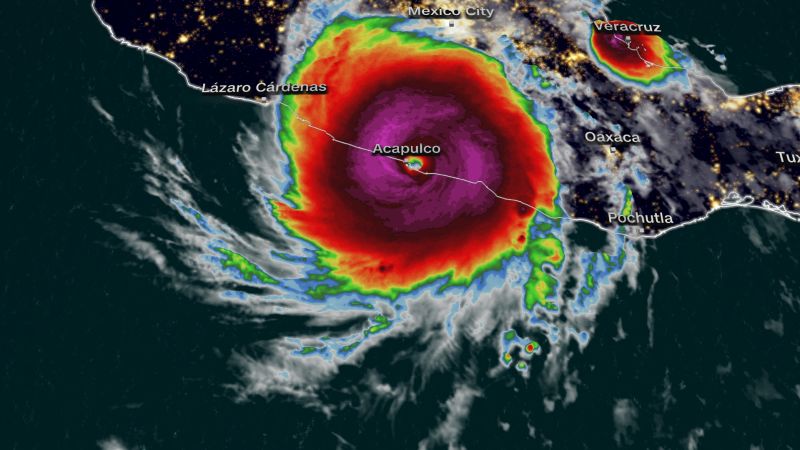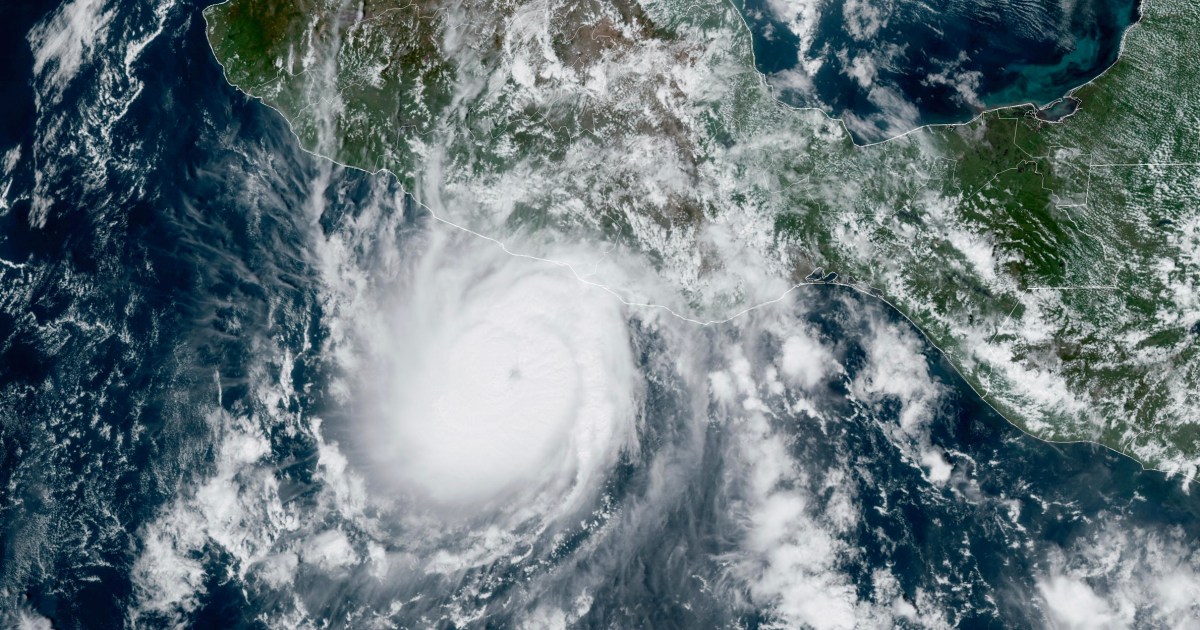On October 25, 2023, Hurricane Otis struck the southern coast of Mexico, leaving a trail of destruction. This storm intensified from a tropical storm to a Category 5 hurricane, bringing devastating winds, heavy rainfall, and the potential for life-threatening storm surges.

Also Read: New Orleans: Super Fog Causes Pile-up on Interstate 55, 8 Killed
As the world grapples with the increasing frequency and intensity of such weather events, it’s essential to examine the impact of climate change on hurricanes like Otis and the measures taken to mitigate their effects.
In just 24 hours, Hurricane Otis underwent explosive intensification, gaining approximately 115 mph in wind speed, a phenomenon rarely observed in the history of hurricane tracking.
This transformation marked it as one of the strongest hurricanes to make landfall in Mexico’s recorded history.
The rapid intensification of hurricanes like Otis is a concerning trend, and scientists attribute this to the effects of the ongoing climate crisis.
Scientists have identified a direct link between the increasing intensity of hurricanes and climate change. In recent years, a larger percentage of tropical storms have intensified as they approach landfall, gaining at least 35 mph in wind speed within 24 hours.
This intensification is fueled by the rising sea surface temperatures, providing hurricanes with extra energy.
The world’s oceans have witnessed record-breaking temperature increases, with numerous marine heatwaves plaguing these bodies of water.
These conditions create a fertile environment for hurricanes like Otis to intensify rapidly. The destruction caused by Hurricane Otis was extensive.
Also Read: Bobi: The World’s Oldest Dog Ever, Dies at 31
As the storm made landfall near the popular resort town of Acapulco, it brought with it devastating winds of up to 165 mph and heavy rainfall.
Buildings were damaged, and unverified videos circulated online, showing flooding outside the Copacabana hotel and damage to a hospital in Acapulco. Many people in the affected areas were forced to hunker down in emergency shelters.
President Andrés Manuel López Obrador urged residents to move to these emergency shelters and away from rivers, streams, and ravines.
However, due to the hurricane’s impact and the communication breakdown caused by the storm, authorities struggled to provide real-time updates on the situation.
Mexico’s national water agency warned of waves as high as 10 meters (32 feet) on the coasts of Guerrero and in western Oaxaca state.
The combination of heavy rainfall and steep terrain increases the risk of landslides in these areas. Additionally, life-threatening storm surges are a concern, particularly in regions with onshore winds within the hurricane warning zone.
In anticipation of Hurricane Otis, authorities in Guerrero took several precautions. A hurricane warning was issued for a 350-kilometer-long stretch of coastline between Zihuatanejo and Punta Maldonado. School classes were canceled across the state, and storm shelters were opened in multiple municipalities.
Also Read: Hurricane Norma Makes Landfall in Mexico as Category 1 Storm
Mexico’s army and navy deployed over 8,000 troops to Guerrero, equipped with specialized rescue equipment to provide aid and assistance.
The Federal Electricity Commission worked to restore power to the affected areas, while the national guard stood ready for rescues and evacuations.
The impact of Hurricane Otis is reminiscent of past hurricanes that have struck Mexico’s Pacific coast. Hurricane Patricia, which made landfall in 2015 as a Category 5 hurricane, brought strong winds, rain, and landslides to cities like Puerto Vallarta and Manzanillo.
Although Patricia did not cause infrastructural damage, it served as a reminder of the region’s vulnerability to powerful hurricanes.
Hurricane Otis also underscores the challenges of dealing with hurricanes when they strike densely populated areas like Acapulco.
In contrast to Patricia, Otis made landfall close to a major urban area, adding to the complexity of response efforts.
It becomes increasingly vital to understand the role of rising sea surface temperatures in hurricane intensification.
The effects of climate change are not limited to Mexico; they are global, and the consequences are far-reaching.
Also Read: Afghanistan Hit by Third Powerful Earthquake in a Week
Top Sources Related to Hurricane Otis Makes Landfall in Mexico as a Category 5 Storm (For R&D)
CNN News:
- China floods: Xi Jinping urges action as rains kill 15 and displace thousands
- At Least 1 Dead as Heavy Rains Set Off Flash Flooding in New York
- Mongolia – Floods
- Assam Floods: About 18,000 People Suffer From Terrible Flood In Dhemaji District
- At least 50 dead in Pakistan monsoon floods since end of June
- New Delhi Floods: Deadly Monsoon Rains, leaving 15 Dead
- Japan Floods: Heavy Rains Causes Floods and Landslides, 1 Dead
- South Korea Floods: At Least 26 Dead and Over 1000 Evacuated
- Central Russia:10 Dead, Including 3 Children as Strong Winds hit Tourist Camp
- Typhoon Doksuri: Beijing’s Heaviest Rain in a Decade Kills at Least 11
- Slovenia Floods: At least 2 Dead, Forcing Evacuations
- Georgia: 11 Killed in Landslide at Mountain Resort Town of Shovi
- Alaska: Houses Swept Away by Glacial Floods in Juneau
- Nepal: At Least 38 Killed, Several Missing in Floods And Landslides
- China: 21 Killed, 6 Missing After Mudslide in Xi’an
- Hurricane Hilary hits California after Lashing Mexico
- Pakistan: Floods Force Evacuation of Almost 100,000 People
- Himachal Pradesh Landslide: 8 buildings Collapsed in Kullu
- Hurricane Idalia Makes Landfall in Florida and Georgia
- Typhoon Saola Threatens China with Category 4 Winds
- Typhoon Haikui: More than 4,000 People were Evacuated
- Brazil Cyclone Kills At Least 31 and Leaves Over 1,600 Homeless
- Dangerous Hurricane Lee Forecast to Become Category 5
- Hong Kong Flooded by Heaviest Rains in 140 Years
- Storm Daniel: At least 2,000 Dead and 10,000 Missing in Libya
- Hurricane Lee Makes Landfall in Canada, 1 dead in US
- Tornado in Eastern China Kills 10 and 4 Others Injured
- Storm Agnes Set to Bring 80mph Winds and Heavy Rain
- New York Declares State of Emergency Amid Flash Flooding
- Sikkim Flash Floods: At Least 10 Dead and 23 Army Missing





















